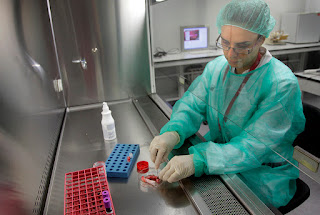What is the purpose of banking cord blood?
Banking cord blood is the process of collecting and storing the blood that remains in the umbilical cord and placenta after a baby is born. Cord blood is a rich source of stem cells, which are immature cells that have the ability to develop into many different types of cells in the body. These stem cells have the potential to be used in the treatment of a wide range of medical conditions, including some cancers, blood disorders, and immune system disorders.
Banking cord blood allows parents to preserve a sample of their child's cord blood for future use in case it is needed for medical treatment. This process involves collecting the cord blood at birth and sending it to a cord blood bank, where it is tested, processed, and stored for future use. The cord blood can then be retrieved and used in a stem cell transplant if needed.
Some people choose to bank their child's cord blood because they have a family history of a medical condition that may be treated with stem cells or because they want to have the option of using stem cells in the future if they become necessary. Others may choose to bank their cord blood because they want to donate it to a public cord blood bank, where it can be made available to anyone who needs it.
The estimated rates for this service?
The cost of cord blood banking can vary depending on a number of factors, including the type of service being offered, the location of the cord blood bank, and any additional services or options that are included.
Private cord blood banks typically charge a fee for the collection, processing, and storage of cord blood. These fees can range from several hundred to several thousand dollars, and may be paid upfront or in installments over time. Some private cord blood banks also offer payment plans or financing options to help families afford the cost of cord blood banking.
In addition to the initial fee, private cord blood banks may also charge an annual storage fee to keep the cord blood in storage. This fee can range from a few hundred to several hundred dollars per year.
Public cord blood banks, on the other hand, do not charge a fee for the collection, processing, and storage of cord blood. Instead, they rely on donations and grants to cover their operating costs. If a family wants to donate their child's cord blood to a public cord blood bank, they may be asked to cover the cost of collecting and transporting the cord blood to the bank. However, this cost is typically much lower than the fees charged by private cord blood banks.
It is important to carefully consider the costs and benefits of cord blood banking before making a decision. Many families find that the peace of mind and potential medical benefits of having a stored cord blood sample outweigh the cost. It is also a good idea to research and compare different cord blood banks to find the best option for your family's needs and budget.



Comments
Post a Comment